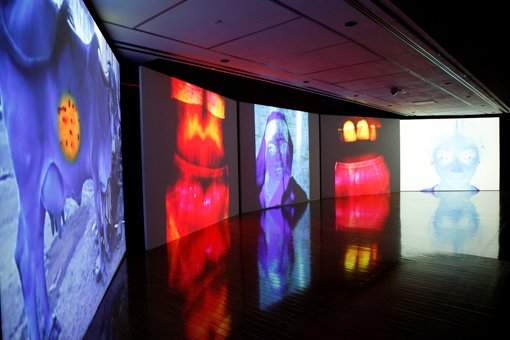Mother India
Two artistic visions of suffering from the subcontinent.
Overview
Artist Nalini Malani's Mother India: transactions in the construction of pain tackles the violence during the partition of India into India and Pakistan in 1947. Rape and violence by both sides laid the groundwork for a lot of current tensions and traumatised or killed a lot of ordinary people along the way. Mother India is especially interested in what happened to the women of both sides, both before and after the violence.
Paid for by money from the Gallery's Contempo program, this video installation consists of five oversize video panels along the back wall. Black and white street scenes pass as voices speak in the background. One voice reassures us, a woman screams "Get off me! Get off me!" Meanwhile we see images of the everyday: everyday men and women on street, everyday protest, everyday blue cows. The violence of partition was horrific, but for an audience neither raised nor schooled with this history, Mother India doesn't suggest enough of everyday life before the violence, which makes it hard for the peace to dissolve into the horror of what had been normal being broken in two.
Also in the exhibition is a wall-spanning work by Hema Upadhyay, the fantastic Mute Migration. This work is a giant city map hung sideways on five black panels. It is Dharavi, a Mumbai slum and one of the world's largest slum districts. The houses are picked out as three dimensional tiny models topped with real aluminium rooves in yellow, blue, brown, and bare metal. The minarets of green mosques are dotted everywhere, among tiered apartment blocks and white-roofed official buildings. Another section of the slum has shanties built on shanties built on shanties. Black paint snakes between these low-rise blocks like streets or a river. Like their real life counterparts, these slums are ramshackle, vivacious and seething. Where Mother India alludes at the depravities of nation building, Upadhyay demonstrates.
Image: Mother India: transactions in the construction of pain 2005 by Nalini Malani.





